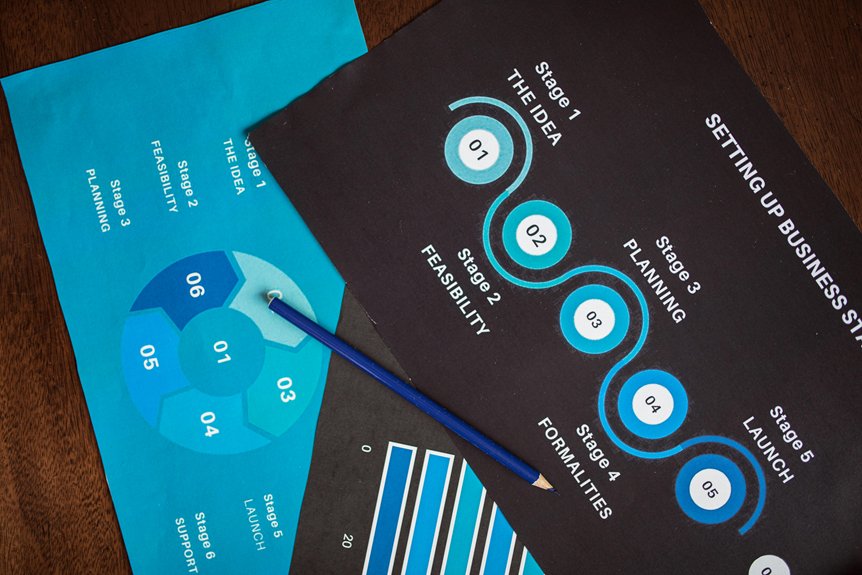When launching a new product, timing can make or break your success. Choosing the right moment to enter the market helps you maximize visibility, beat competitors, and meet consumer demand. But pinpointing that ideal window isn’t straightforward. Understanding how to align your launch with market trends and customer readiness can considerably influence your results. Curious about how to identify these key signals and avoid costly missteps?
Understanding Market Timing and Its Significance
Understanding market timing is crucial because it determines when to introduce your product to maximize success. Recognize seasonal opportunities that align with consumer demand, allowing your launch to capitalize on peak interest periods. Additionally, consider competitor timing; launching too early or too late can give rivals an advantage or cause market saturation. By analyzing seasonal trends and competitor schedules, you can select the best moment to introduce your product, increasing visibility and sales. Proper timing ensures your product stands out, resonates with customers, and avoids unnecessary competition, setting a strong foundation for long-term success. Incorporating market research can further refine your launch strategy and improve your chances of success.
Factors Influencing Optimal Launch Timing
Several key factors can influence the best timing for your product launch. Seasonal cycles play a significant role; launching during peak demand periods can boost your product’s visibility and sales.
Additionally, competitor moves are vital—timing your launch to avoid clashes or to capitalize on gaps they leave can give you a competitive edge.
You should also monitor industry trends and market readiness, but these are primarily external influences.
Recognizing Market Trends and Consumer Readiness
Recognizing market trends and consumer readiness requires you to stay alert to shifts in customer preferences, emerging technologies, and industry signals. Pay close attention to seasonal demand patterns, which can indicate the right timing for your product.
Monitor competitor activity carefully—if competitors launch during high seasonal demand, it may signal a favorable window. Being aware of these cues helps you gauge when consumers are most receptive and when the market is primed for your offering.
Strategies for Timing Your Product Launch Effectively
Timing your product launch effectively requires you to develop a clear strategy that aligns with market conditions and consumer behavior. Conduct a thorough competitive analysis to identify gaps and opportunities, ensuring your launch stands out.
Focus on strong brand positioning to communicate your unique value proposition clearly and consistently. By understanding your competitors’ timing and positioning, you can choose the most suitable moment to introduce your product.
Consider seasonal trends, market readiness, and consumer demand to maximize impact. A well-planned launch, grounded in competitive insights and strategic brand positioning, increases your chances of capturing attention and gaining early market traction.
Risks of Poor Timing and How to Avoid Them
Poor timing can substantially undermine your product launch, leading to missed opportunities and lost sales. Seasonal shifts can cause your product to miss the peak demand window if you launch too early or too late.
Additionally, a poor launch timing may trigger aggressive competitor responses, such as launching similar products or increased marketing efforts, which can overshadow your efforts.
To avoid these risks, monitor industry cycles closely and analyze competitors’ timing strategies. Planning your launch around seasonal trends and competitor behavior helps you capitalize on market receptiveness and minimizes the chances of being overshadowed or overlooked, ultimately increasing your chances of success.
Case Studies: Successful and Failed Launch Timings
Examining real-world examples highlights how launch timing can make or break a product’s success. For instance, Apple’s launch of the iPhone during a peak innovation cycle gave them a competitive edge, outpacing rivals who missed key market windows.
Conversely, failed launches often stem from neglecting competitor analysis or launching before the right innovation cycle, like early smartwatches that didn’t align with consumer demand.
These cases show that understanding innovation cycles and analyzing competitors’ timing are essential. Proper timing allows you to capitalize on market readiness, while poor timing can lead to missed opportunities or market saturation.
Conclusion
By carefully choosing the right timing for your product launch, you can maximize visibility, beat competitors, and meet consumer demand when it’s highest. Pay close attention to market trends, seasonal shifts, and industry signals to identify the most favorable window. When you time it right, your product has a better chance to succeed, build momentum, and establish a strong foothold in the market. Don’t underestimate the power of timing—get it right, and you set yourself up for long-term success. To learn more about how to bring your idea or invention to market, visit us online at Inventors IPO.

